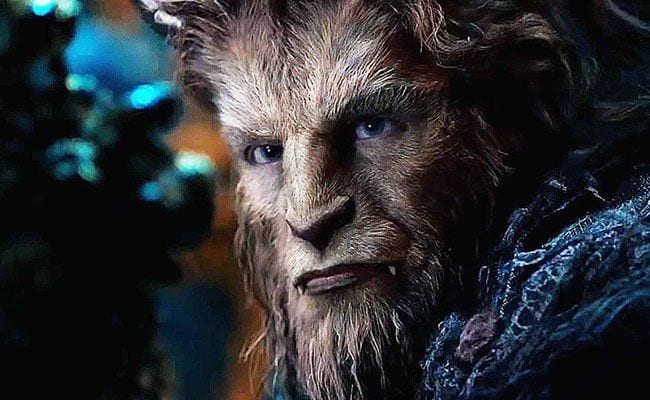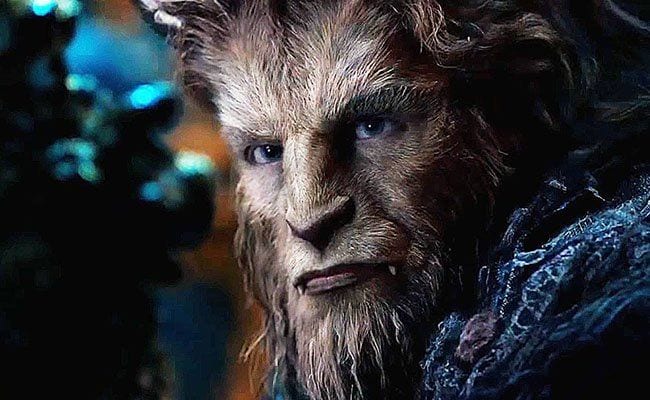
After watching Bill Condon’s live-action remake of Disney’s animated classic, Beauty and the Beast, we’re left clueless to explain its revival. While children surely develop strong emotional connections with animated characters, we might expect that real-life actors would generate a different, equally strong connection, for kids or for parents, a connection that justifies the project.
But Condon’s Beauty and the Beast doesn’t make a connection. It feels emotionally detached compared to the studio’s 1991 predecessor. Unlike Jon Favreau’s 2016 update of The Jungle Book, which seamlessly blends computer generated and practical elements into a story that is original and involving, Beauty and the Beast struggles to achieve a nuanced combination of effects.
There’s no denying the technical majesty of Condon’s creation, which boasts some of the most impressive CGI to date, but the central relationship between Belle (Emma Watson) and the Beast (Dan Stevens) fails to anchor this spectacle to a persuasive set of desires. Their romance is predictable, as are the lessons the film articulates. In case we’ve missed the point of the title, for instance, Belle is kind enough to inform us that “beauty resides within” just after the opening credits.
That she’s already learned this valuable lesson before her story begins is a problem for this film. There’s no character arc for writers Stephen Chbosky and Evan Spiliotopoulos to exploit, but only the clumsy machinations of ingratiating the Beast to Belle through his heroism and some charming lyrics. In turn, Condon leans heavily on the songs to bring the characters and their simplistic motivations to life. While this strategy might work in an animated film, in a live-action format, such one-dimensional characterizations are unconvincing.
Condon wisely revives most of Alan Menken and Howard Ashman’s enchanting songs from the animated original have survived, including an introduction to our plucky heroine in the operatic “Belle.” “There must be more than this provincial life!”, she sings as she wanders through her quaint village. The townies are perplexed by this indescribably beautiful girl who would rather read her books and daydream about the future than settle for being someone’s wife.
What might have been a refreshing message of empowerment for young girls back in 1991 now feels dated and obvious. It’s inconceivable that the industrious Elle won’t escape her small town drudgery, further reducing the stakes in a film already devoid of drama.
The Beast is even less interesting. A handsome prince who rules his castle with a prideful fist is cursed by an enchantress to live as a loathsome beast, complete with hooves and horns. Only love can transform him back to the prince, lest he face an eternity of combing out the tangles in his fur.
Given the technical mastery on display in the rest of Beauty and the Beast, it’s startling how out of place the Beast feels in this live-action environment. The combination of traditional motion capture and a new technology that employs ultraviolet makeup to enhance facial movements fails to render an authentic Beast. Instead, we get a creepy facsimile of reality that only serves to distract from the already shaky romance on screen.
Worse, the Beast presents no personality to make him a worthwhile reclamation project. There’s no hint of regret to temper his bellicosity. When Belle’s father (Kevin Kline) stumbles into the Beast’s lair, he’s quickly imprisoned for all eternity in a frozen cell. The Beast berates everyone, including the poor souls in his castle who have been transformed into (mostly) inanimate objects by the vengeful enchantress.
All of this bluster and posturing may be true to his nature, but the absence of humanity combined with the jarring computer imagery makes the Beast entirely unsympathetic. Given that Belle hopes to uncover the Beast’s humanity even as he means to recover it, this absence becomes somewhat meta.
The Beast’s lack of human appeal dooms the romance between him and Belle before it even lurches into motion. Watson does what she can, delivering each song with gusto and never looking anything less than adorable, but Belle has all the complexity of a cardboard cutout. The scenes between her and the Beast are often interrupted by unrelated musical numbers and subplots, leaving their love affair underdeveloped and lifeless.
There’s never a moment when you honestly believe that the Beauty and the Beast are even in the same room, let alone falling in love. That’s kind of a problem in a romantic fairy tale. To overcome this emotional deficit, Beauty and the Beast delivers Oscar caliber production and costume design. The Beast’s frigid castle looks like it came straight from Tolkien’s nightmarish vision of Mordor, surrounded by scorched earth and impenetrable thickets of ice. Each musical number is delivered with utter conviction, as computer generated characters swirl around ornate backdrops and utilize the considerable vocal talents of Ewan McGregor (as the cheeky candelabra ‘Lumiere’) and Ian McKellen (perfectly cast as the effete ‘Cogsworth’).
When Condon occasionally abandons his attempts to blend the human with the fantastical, Beauty and the Best finds new levels of emotional resonance and joy. Take, for instance, a rollicking ode to the vapid hunter Gaston (Luke Evans), which foregoes computer wizardry in favor of a ‘humans only’ musical extravaganza. This scene is a particular highlight. Gaston’s controversial gay sidekick LeFou (Josh Gad), tears through his ribald tavern song with swashbuckling glee. “I’m especially good at expectorating!” Gaston concludes, aiming a saliva missile directly into a brass spittoon.
Not to be outdone by their human counterparts, the artificial castle crew delivers a spirited version of the classic, “Be Our Guest”. A gourmet meal is prepared by dancing pots and pans as the flamboyant Lumiere serenades Belle in a whirlwind of color and bombast. It’s a whimsical embarrassment of visual riches that almost makes you forget that you’re watching a glorified animated scene in what is supposed to be a live-action adaptation.
It’s precisely because of their effectiveness, however, that these two musical sequences demonstrate why Beauty and the Beast never quite succeeds. While the CGI extravagances are amazing and the human elements show promise, they never work together to create something noteworthy and original. Condon must be commended for honoring his animated source material, but his haphazard mix of the real and the imagined lacks the emotional resonance of the original. Condon stirs an undeniable nostalgia for the animated Beauty and the Beast, but his haphazard mix lacks the emotional resonance of the original.

